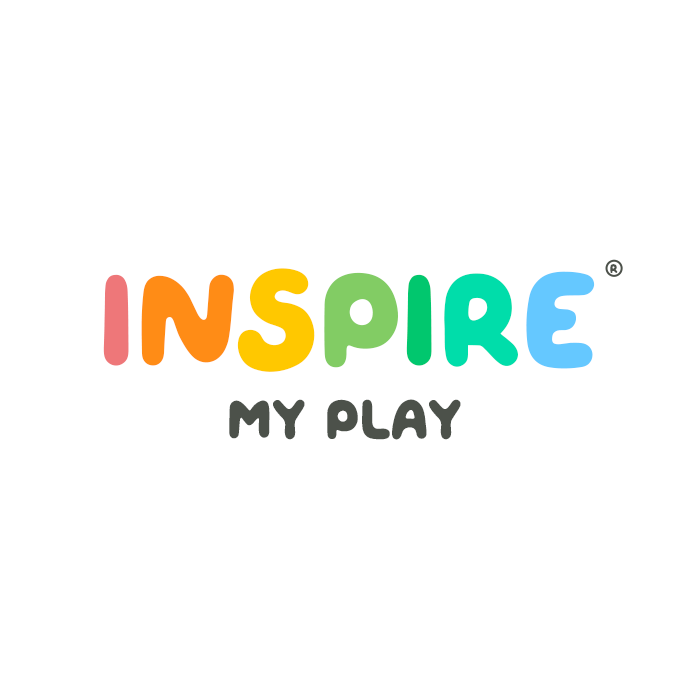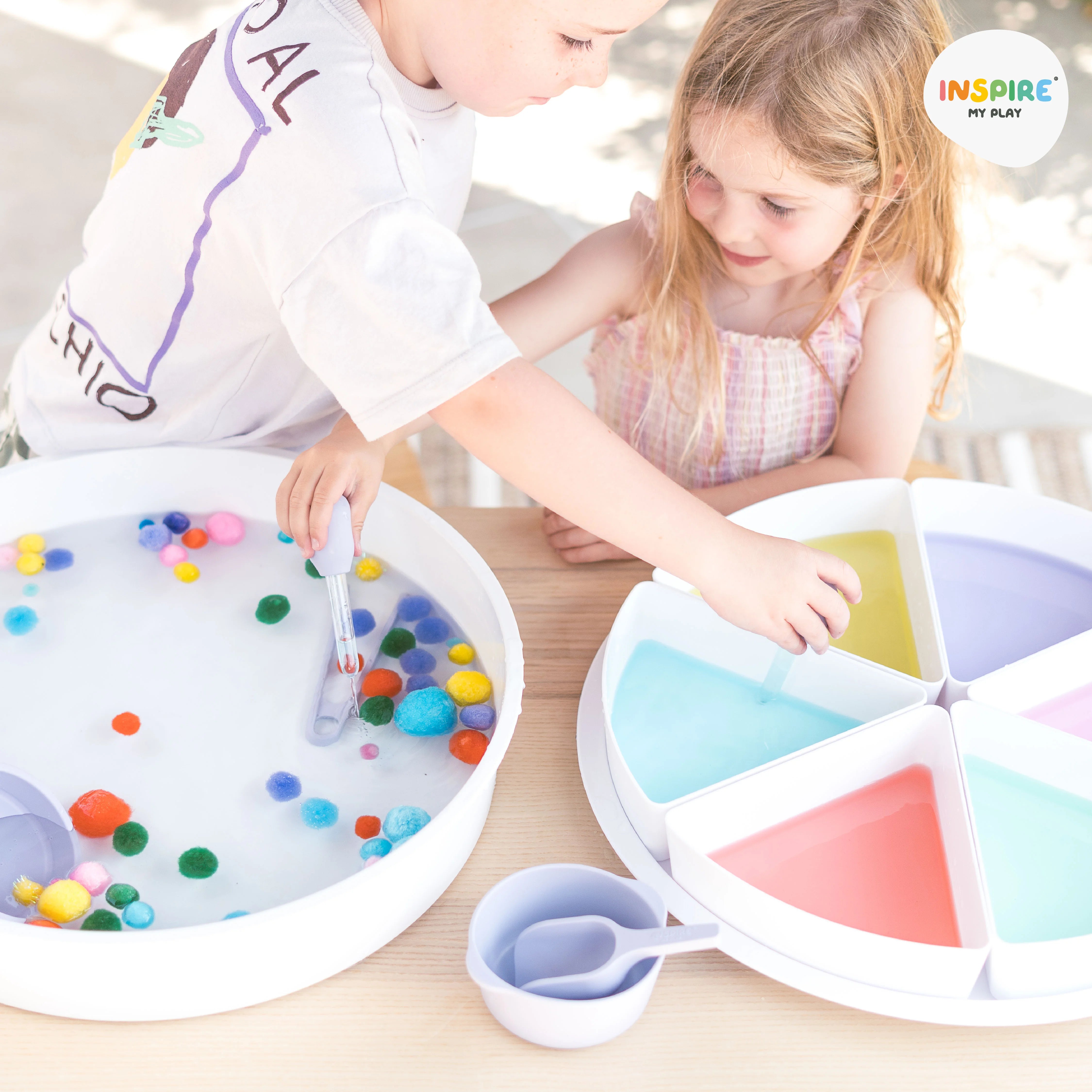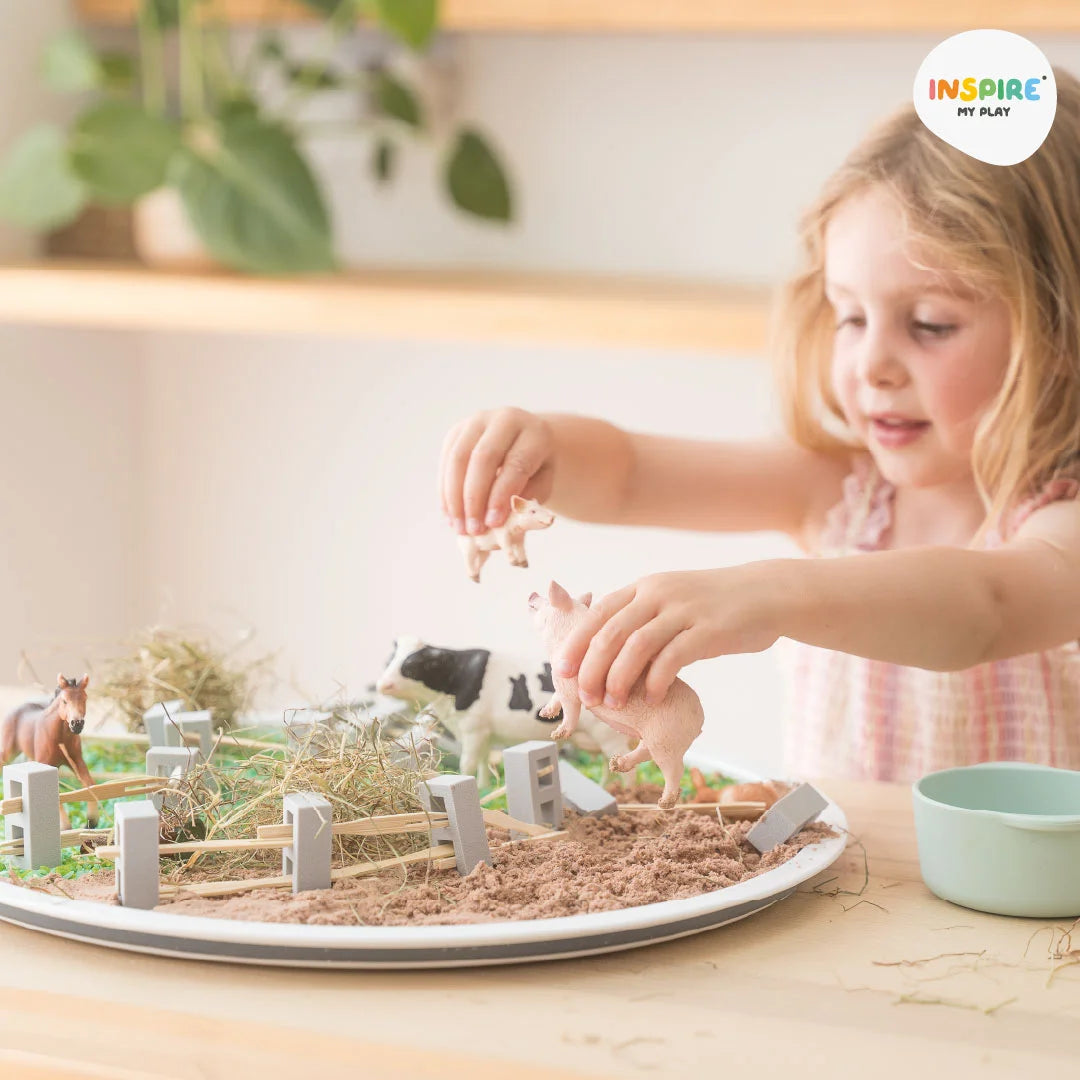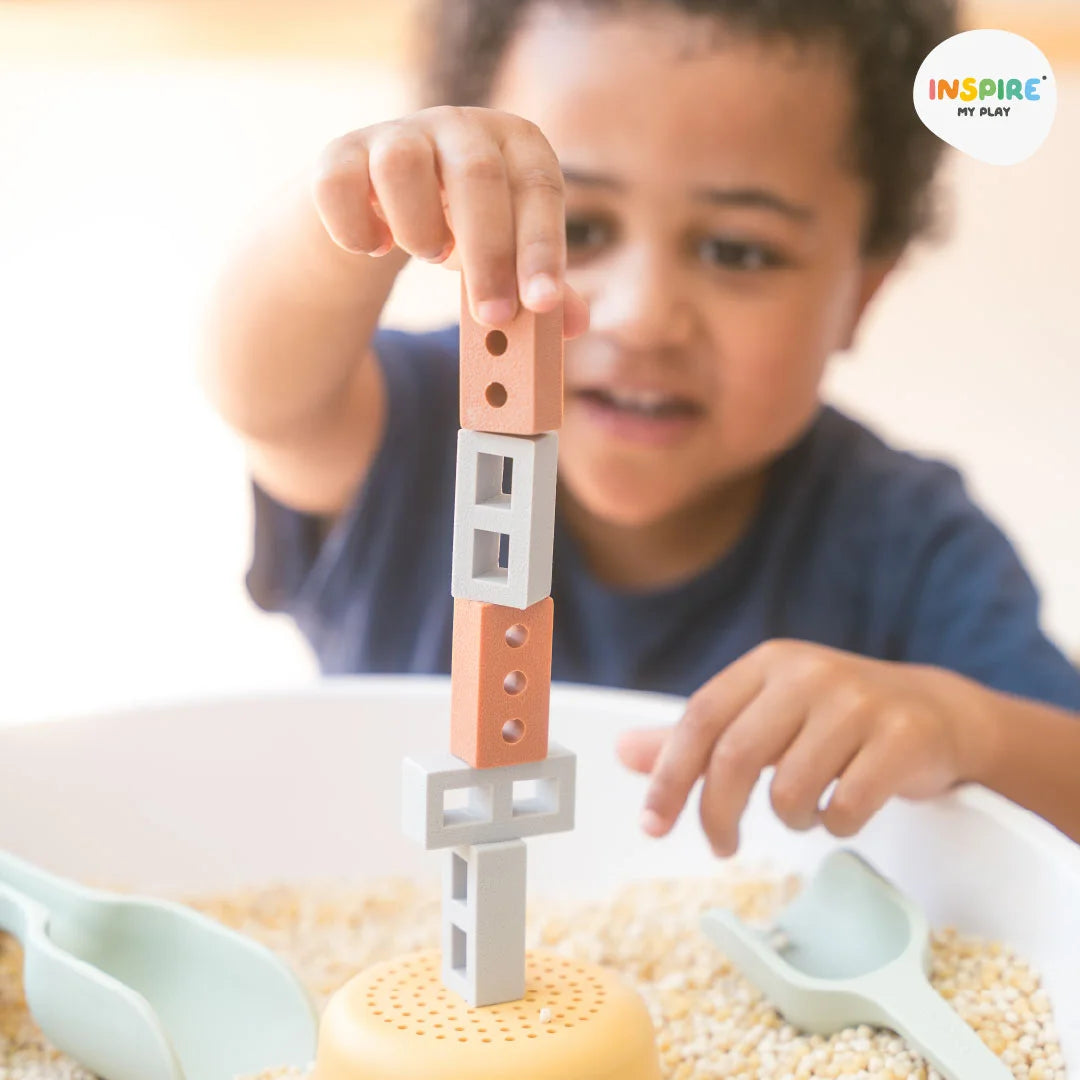How to Thrive in Lock-down: Tips, Tricks & Activity Ideas
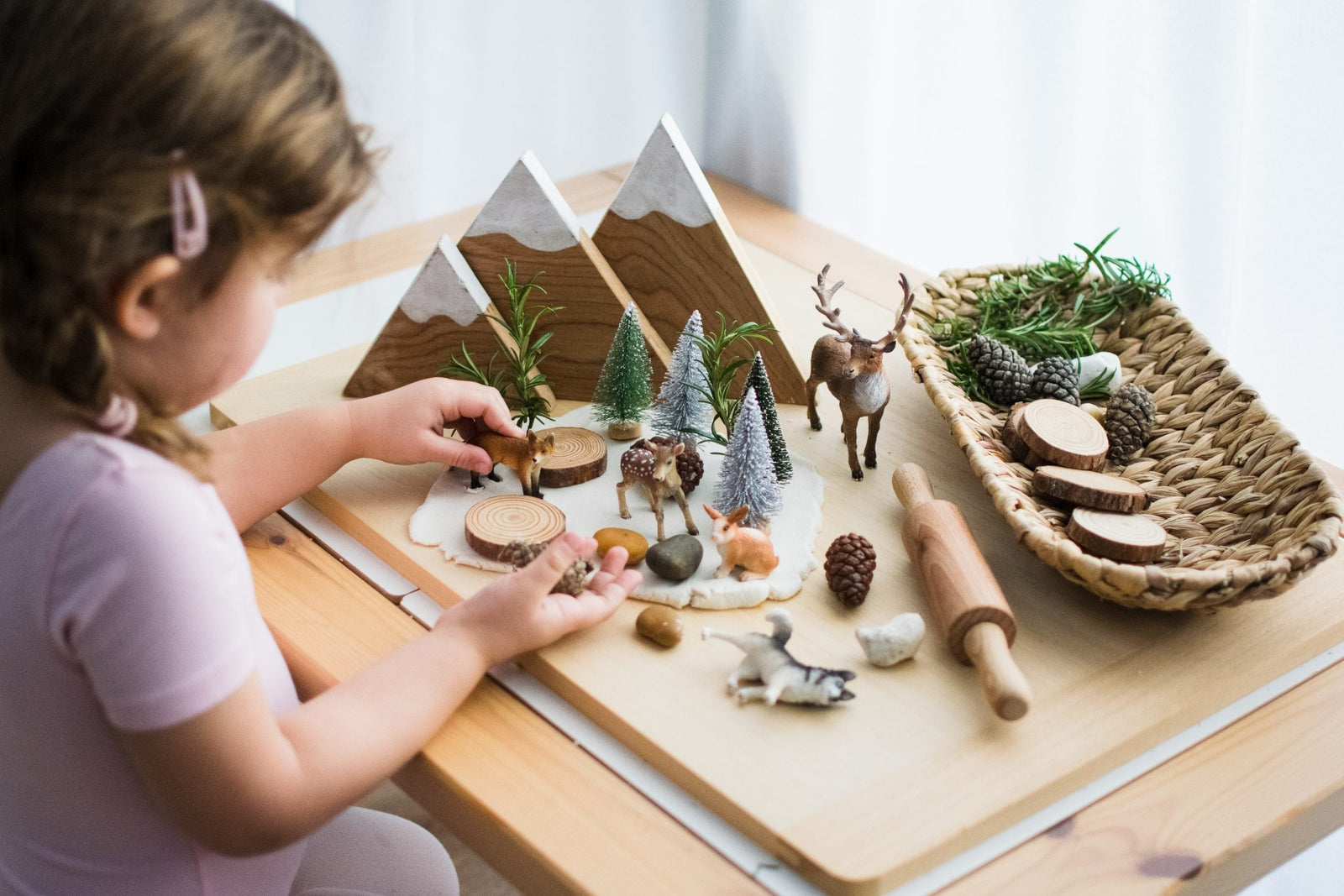
I know there is a lot of anxiety at the moment surrounding school closures, self-isolation and the fact that many of us are going to be responsible for our children's learning for the foreseeable future.
Firstly I wanted to try and relieve the pressure a bit. These are unprecedented times and this is not a normal situation! It is stressful for parents and children alike. So first we need to ensure that our children feel safe and happy. And we need to be in a place ourselves where we can be a calm and stabilising influence in these unsettling times.
So do not worry about creating the perfect home-school experience. It's not realistic! Children will be learning even if you don't create an expert sequence of lessons for them. And the good news is, whatever age your children are, they can learn so much through play and everyday activities!

What can I be doing to prepare?
1. Gather Ideas
If you are looking for a specific idea then Pinterest will help you out no end. Make some boards and start pinning ideas to them!
But if you are unsure where to begin or have very vague starting points you could find yourself scrolling for hours with little luck! I suggest you try checking out the amazing community of Instagrammers who share play ideas everyday!
The Instagram play & learning community is made up of hundreds of mamas just like you, living this right now! Some share a range of activity ideas, others focus on art and crafts or sensory play. Some mama's have very young children and others share learning activities for older kids. There are too many fantastic accounts to mention here so I suggest you go and have a look at who I'm following at @inspiremyplay as a starting point.
When you find some ideas that you like bookmark them! To bookmark a post on Instagram go to the symbol on the bottom right under the photo. I suggest arranging the ideas into collections to make them easier to find. eg Art & Craft, Number Activities, Sensory play etc...
There are lots of companies offering resources right now or discounts to their products. To be honest I've found the avalanche of information quite overwhelming so I'm only going to suggest just one for now. Twinkl is a company that makes educational materials and has lots of activity ideas. I used their website a lot as a teacher and they are currently offering a month's free subscription for parents with the code UKTWINKLHELPS. You can sign up via their website.
2. Stock up on Supplies
Now is the time to make sure you have a good selection of materials to see you through this time. Things like paper, card, paint, glue and crafty bits will be a life saver. Also start saving things from your recycling- boxes, toilet rolls and containers will be great for craft and play activities.
I've put together a 'lock-down list' on my Amazon affiliate page with all our favourite supplies that I will be using during this time. You can check it out below.
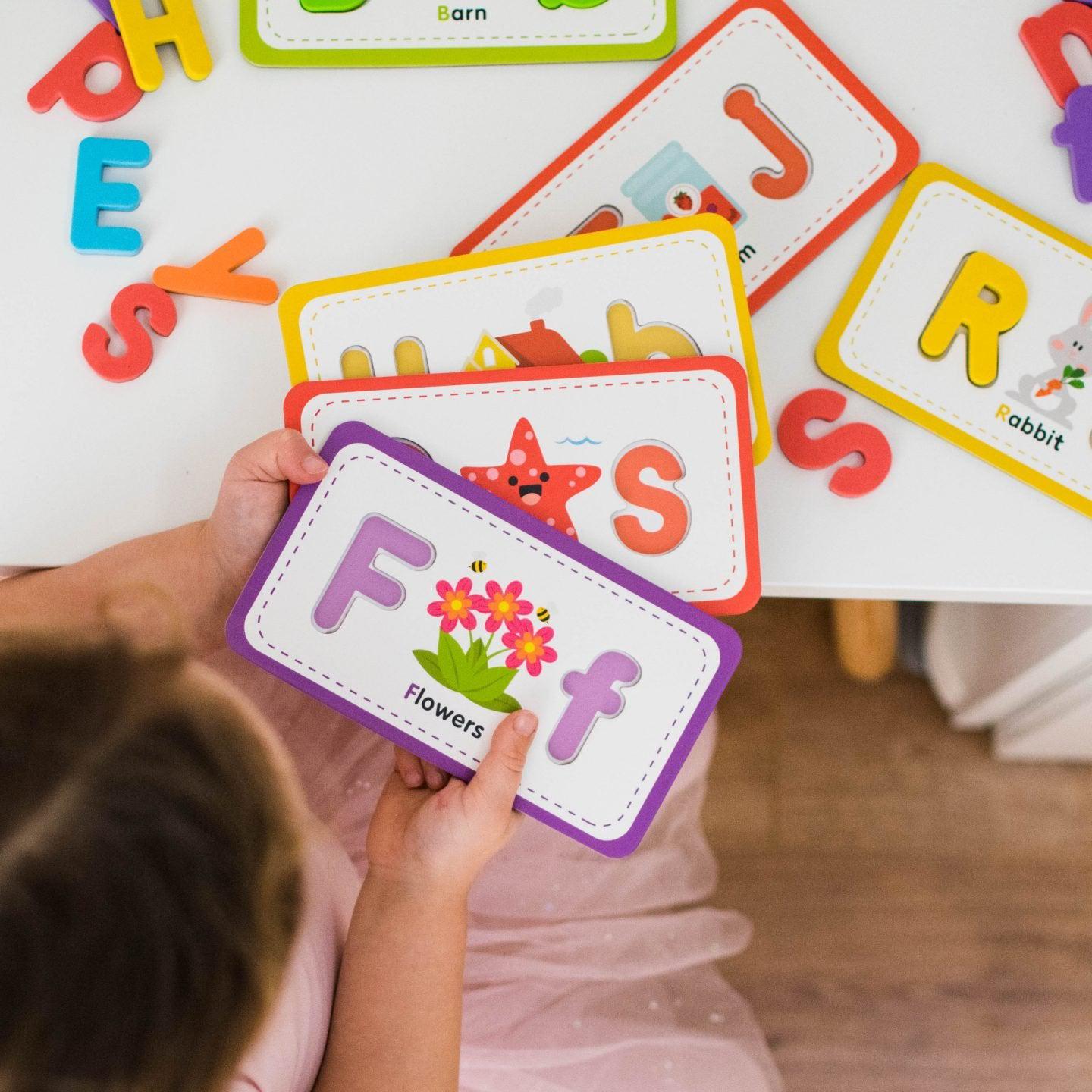
3. Make Some Play dough!

No matter what age your kids are play dough can still be fun! It's an amazingly versatile resource and so easy to make! You can read how to make it on this post here .
4. Get the Garden Ready
If you’re anything like us the garden might have been a little neglected over the winter! If you have a garden it is going to be one of your very best resources over these coming weeks. So mow the lawn, clean the trampoline and sort the outdoor toys etc....
5. Put Away some Toys
This might sound counterproductive but kids get bored of their toys quickly! We have no idea at this stage how long we might have the children at home. My suggestion is to put away some of their toys initially and then swap them over regularly. Toy rotation is a proven method for holding children's attention better and adding value to the toys they already own.

6. Think about Indoor Play and Learning Spaces
We all have very different situations and amounts of space available for play and learning but here are a few things you could consider:
- Move furniture around to create a designated play space.
- If you have older children set up a desk or table where they can work and store their learning materials.
- Set up a space to encourage reading. A few cushions and a basket of books is all you need.
- Set up an art and craft area. Give children access to small amounts of each resource so they can make their own creations and work on their own projects. If you don't have space for this, see if you can't set up a box of art and craft resources that they can take to a table.


How can I thrive in this time rather than just survive!
1. Look After Yourself
You cannot pour from an empty cup. Make sure you are getting plenty of rest and try and make a little bit of downtime for yourself in the day. If that means snuggling up and watching a movie together, thats okay!
2. Make a daily routine
Kids thrive on routine and in these times of uncertainty it’s especially helpful. What your daily routine will look like will depend on the age of your kids, individual situations & whether you’re juggling your own work at home on top. But have a rough daily routine including time for playful activities, work set by school, free play, outdoor play and strategically timed screen time.
A few tips when planning a routine
- Finding a routine that works for you will be a bit of trial and error. Don't be disheartened if it doesn't work well first time. Be prepared to tweak it as neccessary.
- Children's concentration levels tend to be better in the morning so try to plan the work they find less enjoyable or harder in the morning.
- Don't feel you have to timetable every moment. You need breathers and so do the kids.
- Plan in a regular time to face time/ skype friends and family. We've chosen to do this at lunchtime as we hope there will be lots of others free to talk at this time too.
- Make the most of younger children's nap-times to do work with your child.
3. Get the Kids to Help
This is a great opportunity to encourage the kids to do more around the house to help! Even little ones can have a few simple jobs and there's so much to learn from having a bit of responsibility.
Be prepared that there is going to be more mess than usual! Make sure the kids help you with tidying up their toys and activities throughout the day. It might help you to have some 'tidy up music'. Any upbeat song will do or if you search on spotify you'll find ones that have been written specifically for tidying up.
4. Take the Pressure Off!
Children will be learning whatever activities you choose to do with them, so try not to worry if your day isn't full of 'formal learning'.
My suggestion would be to take a few minutes ahead of an activity to think what that learning might be and then simply make the most of these moments.
If you're baking together, for example, you could get them to measure out the ingredients and read the recipe as they go. If you need to go shopping, ask them to write a shopping list with you. You could do some gardening together and talk about what plants need to grow.
There's learning opportunities in everything if we look for it!

Where to start with planning learning
Hopefully the school that your child attends have given good guidance and provided you with some learning materials, but I know that won't be the case for everyone. In this situation I suggest you follow these simple steps.
1. Pick a theme
Having a theme for the week or over two weeks will help focus your mind and also help you to search for ideas. If you're doing a search on Pinterest you'll find it much easier to find good ideas if you have a specific search term to use.
You might be able to continue a theme already started by school or preschool, or you could choose a seasonal theme like Easter. Alternatively choose something that they are really interested in at the moment. You could even theme a week around a book.
2. Gather Ideas
Gather ideas around the theme. They could be a mixture of art & craft activities, science or music. If you haven't been given any literacy and maths work you might want to think carefully about how to incorporate this in as well, but don't worry if it doesn't fit in exactly with the theme. No one is going to have the time to curate a perfectly themed week!
3. Adapt
If you are looking after sibling groups at home, rather than having a different activity for everyone, think about how you can adapt one activity to suit them all. This will be partiularly important if you have younger sibling groups who are going to find it harder to work independently. If you keep your activites playful and practical it will be so much easier to cater for all ages.
Here's an example. This week my eldest is going to be learning about counting in 2's, 5's and 10's using money (directed by school). I intend to set up a little shop role play using some of their play food items with price labels on them. My 2 year-old will just enjoy playing with the food, the shopping baskets and the till. My 4 year old can practice reading some numbers to 10 and paying for items with pennies. And my eldest will be paying for items using 2p's, 5p's and 10p's. I've only had to set up one activity that can cater for them all.
Not everything you adapt will work perfectly for sure! But if it cuts down the juggling it will be worth it!

4. Make a Plan
Have some idea where you're headed for the week. On a Sunday evening I intend to sit down and write a rough timetable for the week following our daily routine. But I won't be surprised or worried if I don't get it all done! Be flexible and be prepared to go off the plan if need be!
If you are able to, try and have a few activities organised ahead of time. Think about preparing a few bits in the evening for the next day or first thing in the morning whilst they do some free play.
Activity Ideas
I thought I would go through my Instagram account and pick out some of the activities that I've found most successful. I've particularly focused on ones that work for a range of ages, since many of us will have sibling groups at home.
For the suggestions that are linked to Instagram you can either view the post on Instagram by clicking on it or view the carousel of photographs in this post by clicking the arrow on the photo.
Do check out my Instagram account (@inspiremyplay) for more play and learning activities. I'll be posting what we're up to in my stories and continuing to share activities on my grid.
1. Play Dough
As I mentioned earlier play dough is an incredibly versatile resource and you will find it so useful during this time, if only to give you a few minutes breather!
Don't forget making play dough is an activity in itself and a great opportunity to do some measuring. Find my recipe here.
Play Dough Cakes
Combining play dough with cupcake cases, baking trays and cutters is such a winner! There are also lots of opportunities to get some maths in there such as counting out cakes or sharing out candles onto cakes equally.

Play Dough Small Worlds
Challenge the kids to make a small world for an animal or figure. If you don't have lots of loose parts to hand head into the garden to collect some resources like twigs, sprigs of plants and petals.

Sensory Play Dough
There are so many ways you can enhance play dough to make it an amazing sensory experience. Adding grated lemon peel or lavender are just two ideas. Head to my Instagram for more inspiration.

This is a fun little STEM challenge. All you need is a tray, some play dough and a marble.

2. Water
Water play is universally loved by children and so great for mixed-age groups. If you want an activity that keeps them engaged for a long time water is a safe bet!
Pom-Pom Water Play
This is a favourite of my girls. It is great for fine motor skills and could be used for lots of great maths activities.

Duplo in Water
To get children playing better with their toys, often they just need them to be presented in a different way. My girls loved playing with the duplo in a tray of water. You could also do this in a bath tub or the sink.
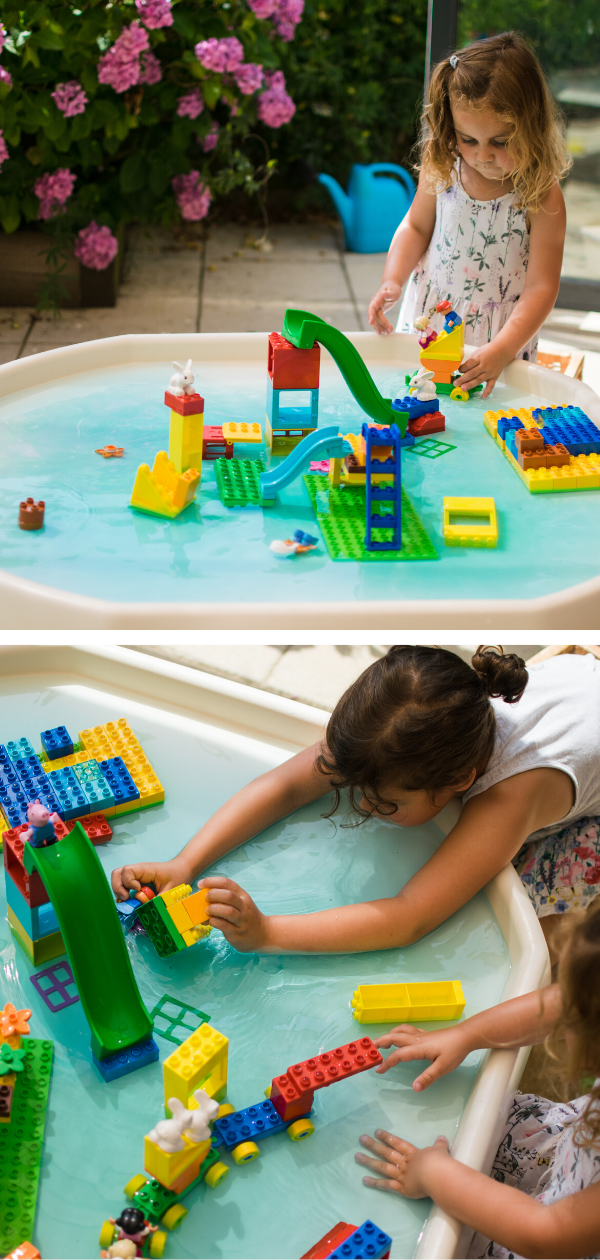
Perfumes or Potions
What child doesn't like making concoctions? For this activity we collected a few petals and flowers on a nature walk. I gave them pipettes, jam jars and essential oils and they spent ages making their own perfumes.

Bubble Foam
A fun twist on water play- make bubble foam instead!
To make bubble foam put 1 part tear free bubble bath (or washing up liquid) to 2 parts water into a bowl. We usually do 1/2 cup of bubble bath and 1 cup of water at a time. If you'd like to colour your bubble foam add a little food colouring at this stage. Mix it up using an electric hand mixer until you start to get stiff peaks and then scoop it out into a tray for play. We usually make 3 or 4 batches of different colours to fill a tray.

Ice Play
One of our favourite activities is to freeze objects in water and let them excavate it! All sorts of things could be frozen- here we made a mini aquarium using a pudding basin.
Give them something to chip away at the ice with and warm water and salt to aid the melting process!

3. Other Sensory Play
Water Beads
Water beads are a lot of fun but I would advise doing them outside if you can as they do bounce everywhere! We combined them with our marble run which the girls absolutely loved!

Cloud Dough
This is a messy one! But lots of fun too!
For more sensory play ideas you can also check out this blog post- 10 Sensory Bases for Small World Play
4. Recycling
Cardboard Box Play
Make a world in a cardboard box!

Recyclables in a Sensory Tray
We are huge fans of rainbow rice, but unless you already have it made up it's not really an option at the moment, at least not in the UK. So bird seed makes a good sensory base instead. And adding a few boxes and tubes from your recycling for scooping and pouring couldn't be easier and is so much fun!

Sticky Wall Pom-Pom Drop
This is an activity that could be adapted for older children by challenging them to make a ball run of tubes to drop pom-poms down. This is a piece of sticky-back plastic (contact paper) with the sticky side facing upwards.

Milk Bottle Elephants
5. Experiments & Stem
One of my 6 year-old's requests for this time at home is to do more experiments! Here's a few STEM activities that we've already enjoyed.
Cloud Experiment
Fizzy Experiments
Have you ever tried recreating the vinegar and baking soda (bicarbonate of soda) reaction before? Basically when these two mix it results in lots of fizzing! This is great fun for setting up a potion making station or creating volcanoes! This fizzy rainbow was an adaptation we did of this reaction with frozen ice cubes.
Oobleck
Gloop or oobleck is a non-newtonian fluid. This means it sometimes acts as a liquid and sometimes as solid. It's brilliant fun to explore and great for a messy play activity!
6. Arts & Craft
Art & Craft activities are going to be such a blessing during this time! Here's just a few art and craft activities that are perfect for this time of year.
Filter paper butterflies
Coffee filters are such a brilliant resource. We loved making these butterflies. Swipe through the photos to see the process.
Tin-foil Birds
This is a great activity using resources that you're likely to already have around the house.
Potato Printing
Shaving Foam Art
This is one to save for Easter. Shaving foam art is so easy and creates beautiful results every time!
7. Garden Play
We are going to be spending as much time in the garden as possible over this time. Here are some simple activities you could try.
Painting with Water

Small Worlds in the Garden
Make a small world in a plant pot or flowerbed!

Sand Cakes & Mud Pies
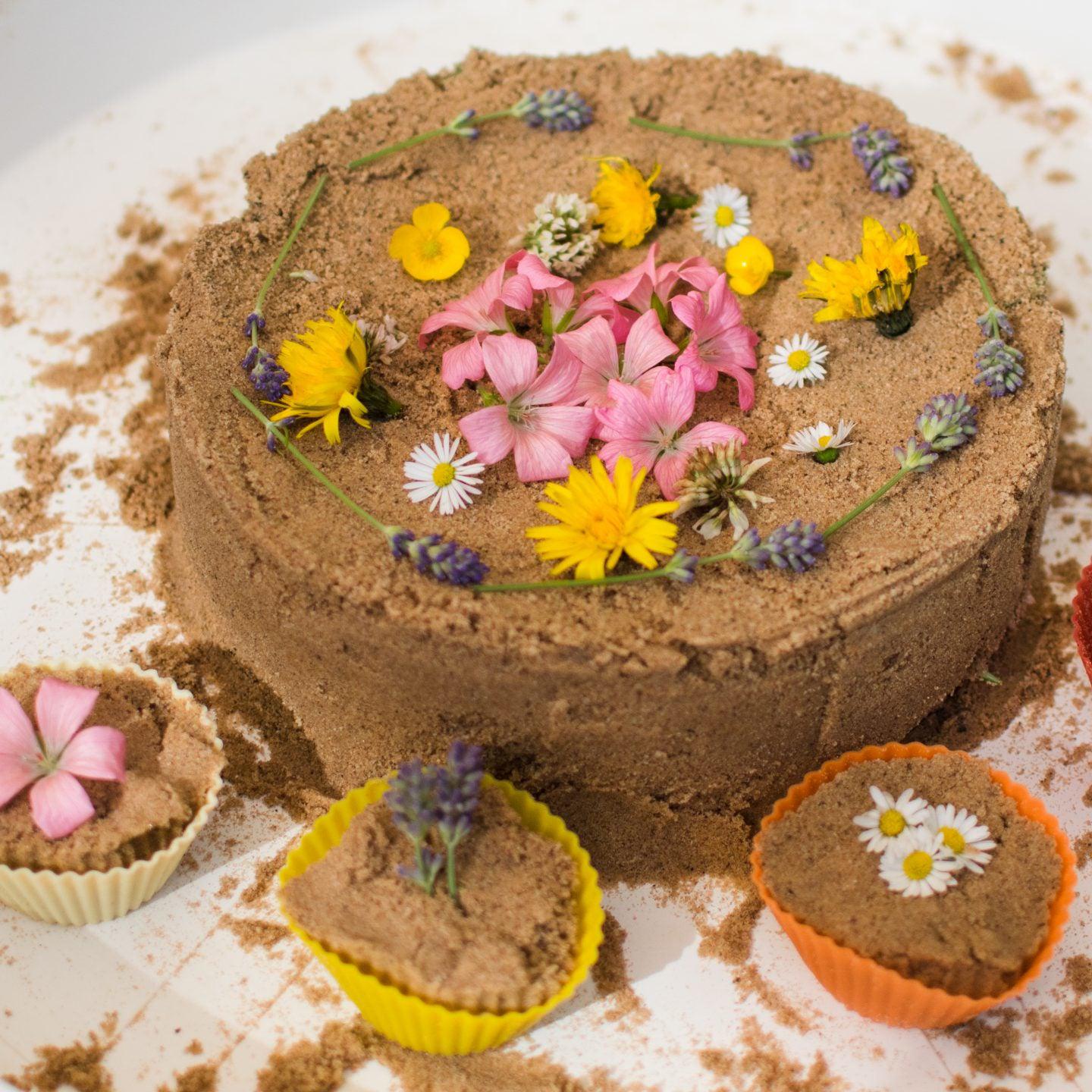
Colour Hunt
This is a great one to take on a nature walk. Just colour a piece of card with rainbow colours and then cover it with a piece of sticky-back plastic with the sticky side up.

If you've found this post useful please share it with your friends and family and pin it for later reference. Thank you!

